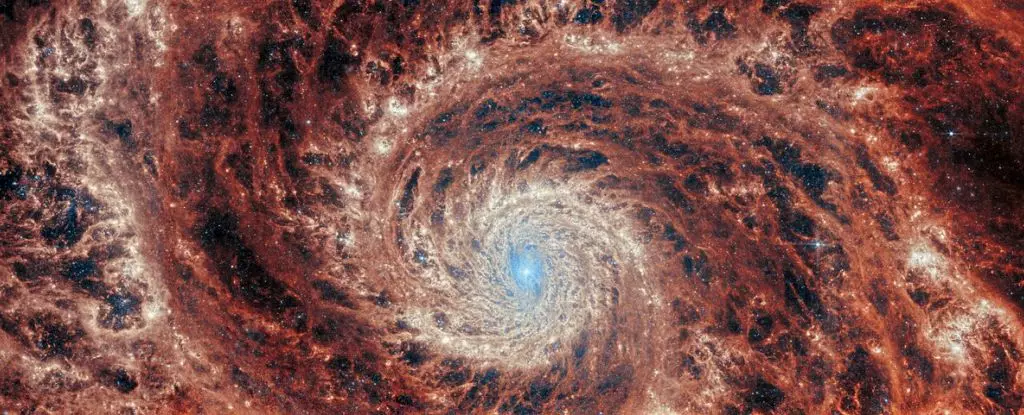The universe, a vast expanse shaped by phenomena we are still striving to comprehend, holds its secrets deep within the fabric of time and space. One of the most compelling mysteries revolves around the formation of galaxies. Recent revelations from the James Webb Space Telescope (JWST) have uncovered a marvel that might reshape our understanding of galactic evolution—the discovery of a colossal galaxy, Zhúlóng, dating back approximately 12.8 billion years. This early formation challenges our existing notions of how swiftly galaxies coalesced in the universe’s infancy and suggests a more complex narrative concerning the emergence of structured cosmic entities.
Understanding Zhúlóng: A Cosmic Wonder
Zhúlóng, named after the Torch Dragon of Chinese mythology, is not merely another addition to the catalog of celestial wonders. Its classification as a grand design spiral galaxy, characterized by distinct spiral arms separating a vibrant galactic core, elevates it to a unique tier in the hierarchy of galactic structures. The name itself evokes imagery of strength and illumination, a fitting metaphor for a galaxy that emerged in an era we regard as pivotal—the first billion years post-Big Bang.
According to a paper authored by astronomer Mengyuan Xiao and colleagues, the morphology of Zhúlóng reveals a distinct evolutionary state, with a well-defined bulge and a star-forming stellar disk. These morphological traits suggest that this galaxy has begun the transition towards a mature structure much earlier than previously documented. The implications are profound; if galaxies akin to the Milky Way could form within a mere billion years after the Big Bang, then our timeline for galactic evolution needs substantial reconsideration.
Historically, scientists have posited that spiral galaxies were a rare breed in the early universe, effectively absent beyond 11.5 billion years ago. The finding of Zhúlóng contradicts that narrative substantially. Its existence indicates that the grand design spiral form, often seen in today’s universe, might not have taken as long to come together as once believed. Instead of evolving over billions of years, galaxy formation could transpire at a significantly accelerated rate. Current models that attempt to explain galaxy formation and the genesis of spiral structures now face critical reassessment.
The significance of Zhúlóng’s discovery lies in its implications for our cosmological models. It shifts the paradigm on how swiftly massive galaxies can form, suggesting a timeline where such assemblies occur 10 times faster than what we observe in our local universe today. This fits into a broader narrative that our universe’s early days may have been more dynamic than previously appreciated.
The pivotal role of the James Webb Space Telescope in unveiling Zhúlóng cannot be overstated. As an advanced instrument equipped for exploring the cosmic dawn, JWST accumulates data that stretches the boundaries of our astronomical understanding. The discovery of Zhúlóng was not a targeted observation but rather a serendipitous find during the larger PANORAMIC survey aimed at exploring galaxies within the tumultuous early epochs of the universe.
Observations from JWST provide astronomers with an unprecedented view of ancient cosmic structures, allowing them to piece together a timeline of formation events that have sculpted the universe we see today. The information gleaned from Zhúlóng serves as a cornerstone for ongoing research and serves as a beacon guiding future explorations of early galactic evolution.
Zhúlóng stands as a profound reminder of our universe’s complexity and the dynamism that propelled its formation. The implications surrounding its discovery extend beyond mere alterations to cosmic timelines; they force us to reconsider the very nature of galaxy development itself. As research progresses and more data is collected, we may find that the early universe was a bustling arena of stellar activity, far richer in complexity than we have dared to imagine. Thus, Zhúlóng not only illuminates the skies of the past but also lays the groundwork for a deeper understanding of our galactic future.


Leave a Reply